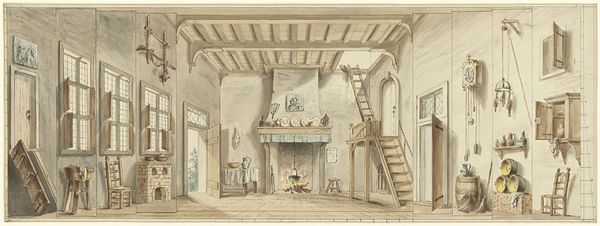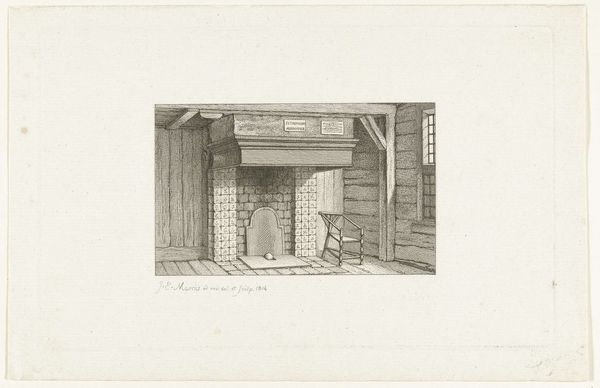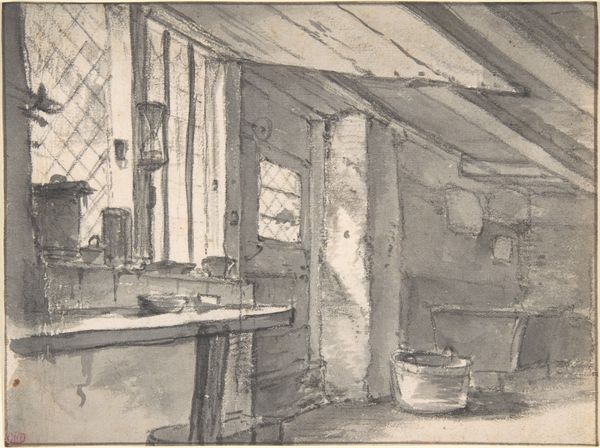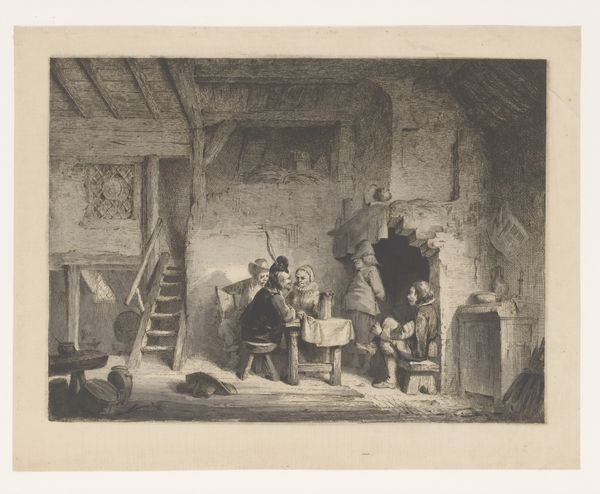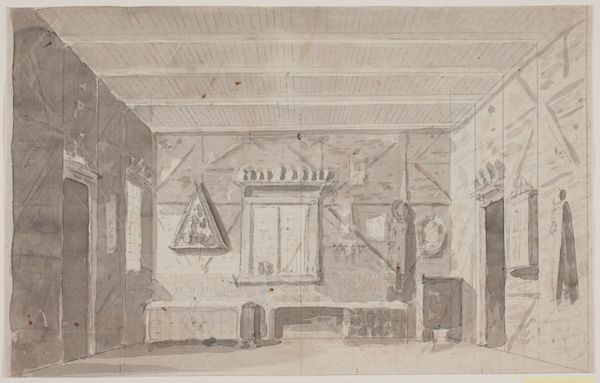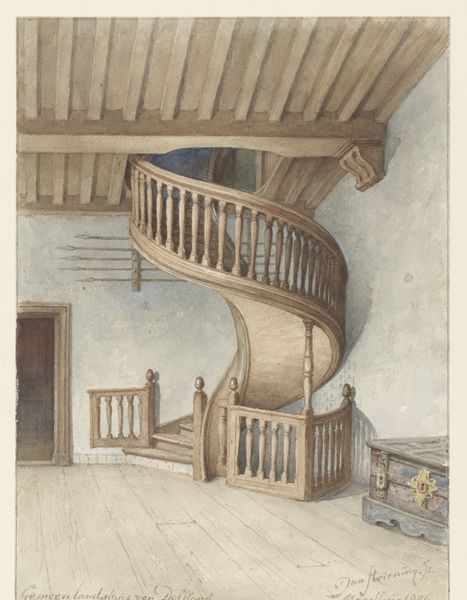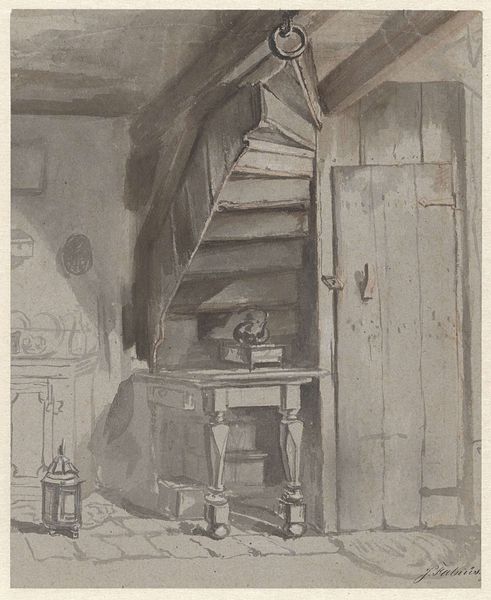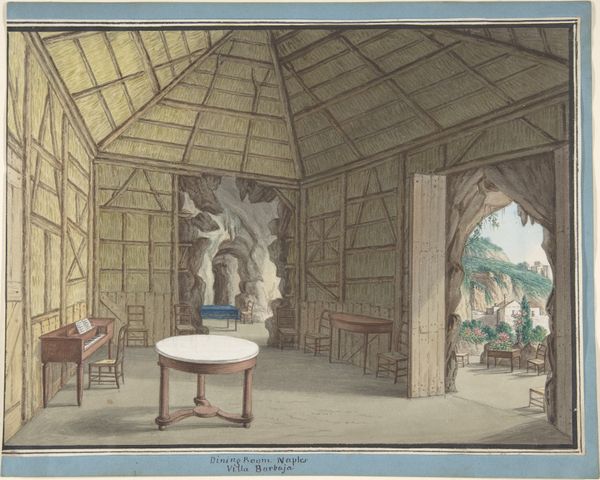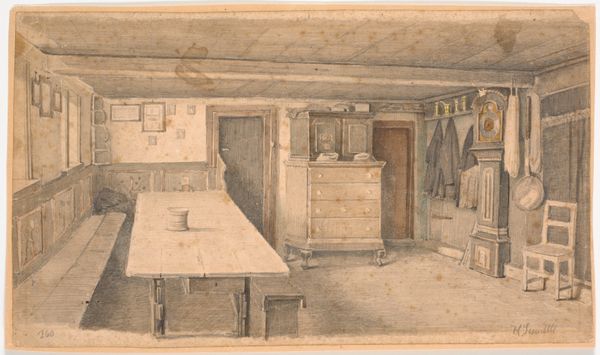
drawing, watercolor, pen
#
beige
#
portrait
#
drawing
#
aged paper
#
toned paper
#
light earthy tone
#
perspective
#
watercolor
#
nude colour palette
#
brown and beige
#
romanticism
#
neutral brown palette
#
pen
#
genre-painting
#
history-painting
#
warm natural lighting
#
brown colour palette
#
realism
#
warm toned green
Dimensions: height 186 mm, width 225 mm
Copyright: Rijks Museum: Open Domain
Curator: Immediately, I'm struck by the simplicity and the light, almost sterile atmosphere of this drawing. It's very different from other interior scenes from that period. Editor: Well, let's consider Willem van Senus’ "Interior of the Czar Peter House in Zaandam," executed around 1824 or 1825, currently residing at the Rijksmuseum. We have to ask, what purpose did it serve beyond a simple representation? Curator: It definitely evokes a certain austerity. The cool light washing over the pale wooden planks, the stark lines of the furniture… It feels almost devoid of human presence, which I find interesting. The only relief is that fire inside the fireplace. Editor: That lack of presence could signify something about the evolving nature of power and the 'folk hero.' Think about how spaces were memorialized and understood at this time. It depicts a historical site where Peter the Great of Russia stayed in 1697 while studying shipbuilding. It carries huge weight as a place invested in historical significance and idealization of progress through the enlightenment project. It attempts to visualise power in that period and context. Curator: I hadn’t thought about it that way. Looking closer, the perspective creates an interesting tension. Our eye is drawn to the fireplace, almost venerated, yet the emptiness surrounding it amplifies the silence and stillness. It challenges our conceptions and expectations from this type of subject, it has become an icon and a sort of touristic site to contemplate, as if there, silence could trigger some inner discovery. Editor: Indeed, consider too, that Van Senus, created it after the death of Napoleon and during the establishment of the kingdom of the Netherlands. We must then consider how the building might symbolize ideas of both Russian and Dutch identities in opposition to Napoleonic power. Curator: That's fascinating. It definitely provides more scope and contextual relevance about this humble drawing, allowing us to engage with history through this apparently austere, unpeopled space. Editor: It goes to show how seemingly straightforward imagery can reveal significant insights when interrogated using interdisciplinary critical analysis.
Comments
No comments
Be the first to comment and join the conversation on the ultimate creative platform.

